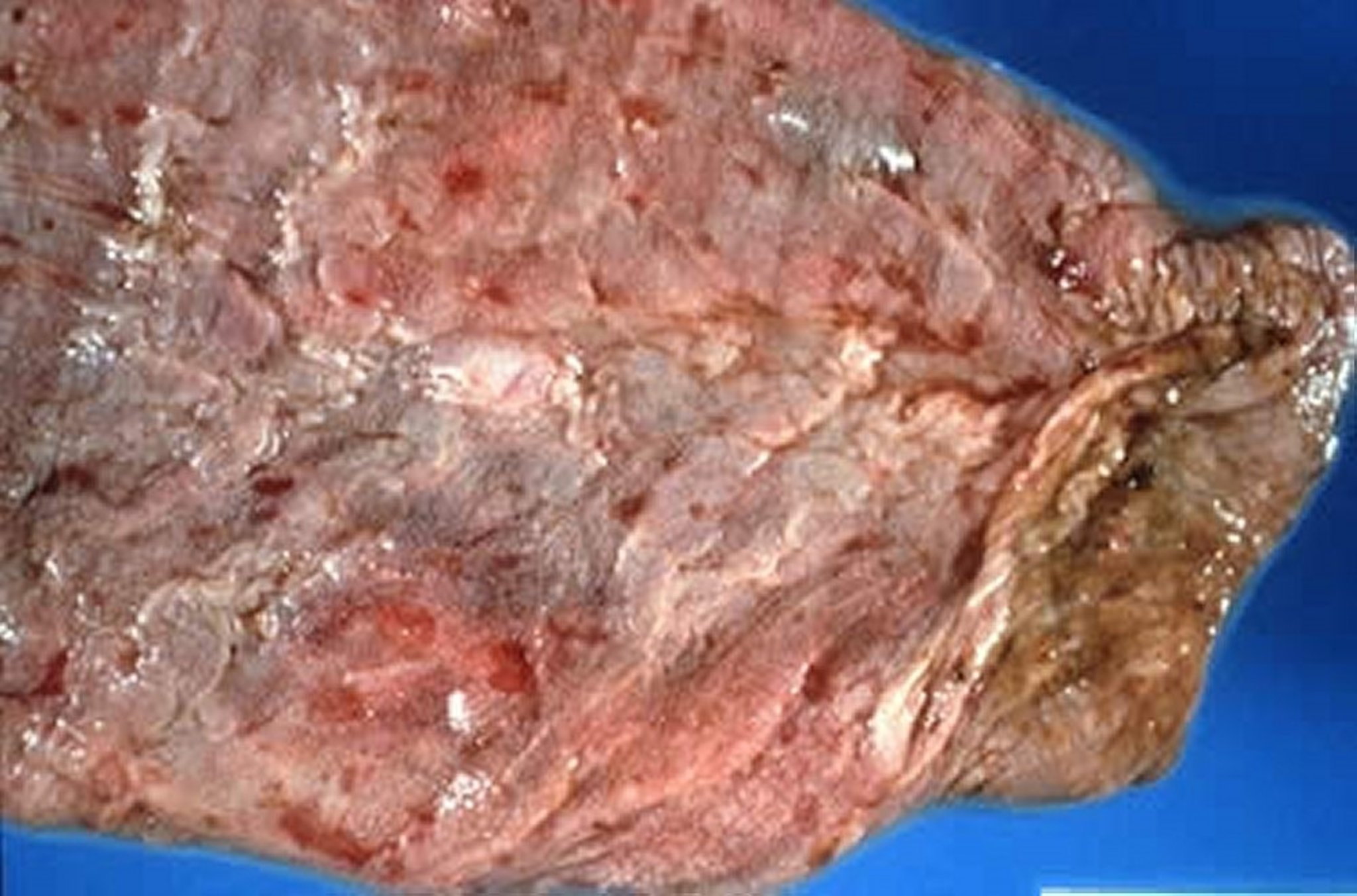Courtesy of the Department of Pathobiology, University of Guelph.
Like most other mammals, pigs are susceptible to infection by numerous serovars/genomospecies of leptospires. The importance of leptospirosisas a clinical disease of swine and an occupational risk to swine industry workers, is highly variable across countries and can wax and wane. Leptospira interrogans (serovars Pomona, Icterohaemorrhagiae, Canicola, Hardjo, and Bratislava), L borgpetersenii (serovars Sejroe and Tarassovi), and L kirschneri (serovar Grippotyphosa) are all reported to infect pigs.
Courtesy of the Department of Pathobiology, University of Guelph.
Swine are maintenance hosts (ie, they act as a source of infection for their own species) for L interrogansserovars Pomona (and closely related Kennewicki) and Bratislava. Typically, infections with these serovars are subclinical in nonpregnant animals. Historically, serovar Pomona has been of greatest importance with respect to reproductive disease in pigs and to zoonotic risk. Abortions occurring 2–4 weeks before term are the most common manifestation of leptospirosis in pigs. Piglets produced at term may be dead or weak and may die soon after birth. The principal differential diagnosis is porcine reproductive and respiratory syndrome. Other infectious causes of pregnancy loss include brucellosis, parvovirus, andporcine circovirus.
Infections with serovar Pomona typically result in a marked rise in antibody titer using the microscopic agglutination test (MAT). The epidemiology of serovar Pomona is typical of most Leptospira spp, with the salient feature being renal colonization with longterm shedding in the urine. Leptospires are susceptible to desiccation, and transmission is more likely in moist environments. Therefore, clinical problems are most likely to occur in herds where exposure to urine is likely, including outdoor systems with wallows, indoor systems with solid floors, drinkers that can be contaminated with urine, open effluent gutters, and use of recycled lagoon water for flushing.
The epidemiology of L interrogansserovar Bratislava infection in pigs is not well understood. Urinary transmission appears to be less efficient, and venereal transmission is suspected to be important. Again, infected pigs rarely develop clinical signs typical of acute leptospirosis. Reproductive failure, as evidenced by infertility and sporadic abortion, is the most common clinical sign. There is some evidence for variability in pathogenicity within the serovar. Diagnosis of clinical infections is difficult because MAT titers rarely exceed 1:100 and similar titers may be observed in clinically unaffected herds. Incidental infections may occur with organisms of the L kirschneri Grippotyphosa, L interrogans Icterohaemorrhagiae, and L interrogans Canicola serogroups. These can cause reproductive disease and, rarely, acute leptospirosis in young pigs.
Treatment and control of leptospirosis may include a combination of vaccination, medication, and management changes. Immunization with bacterins is widely practiced in breeding herds and reduces the prevalence of infection and abortions. However, bacterins should not be expected to eliminate renal infection. Immunity is serovar specific, and vaccines should include all serovars known to be clinically important in a region. Facilities should be constructed and managed to minimize the likelihood of urine contamination of water and feed, as well as direct exposure to, and pooling, of urine. Control of rodents and other small mammals is recommended to reduce the risk of infection with incidental Leptospira serovars, as well as other pathogens.
Successful use of antimicrobials (including tetracyclines, tylosin, erythromycin, and streptomycin) to reduce and eliminate leptospire shedding in pigs has been reported. However, such approaches should be limited in application to outbreak situations and should comply with regulatory requirements. The apparent decline in the importance of leptospirosis in some developed countries in recent decades may be attributed, in part, to confinement housing on fully slatted floors, increased attention to biosecurity in general, better rodent control, all-in/all-out management of growing pigs, and routine use of vaccination in breeding herds.




